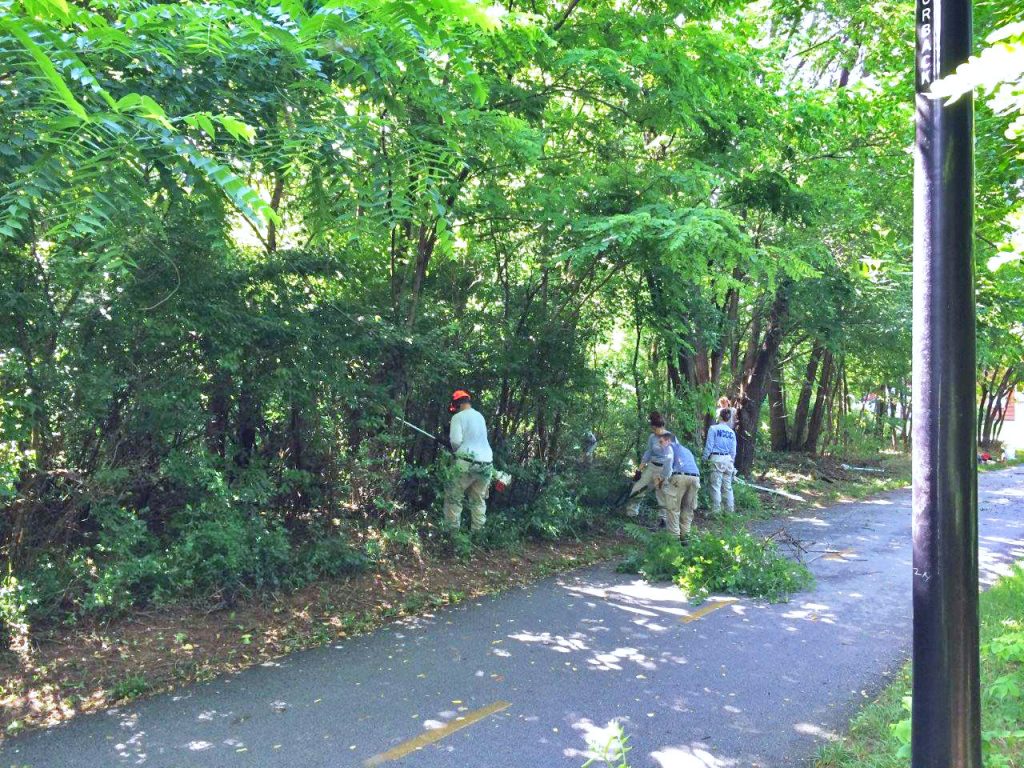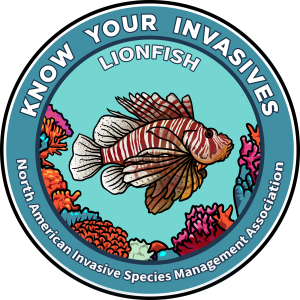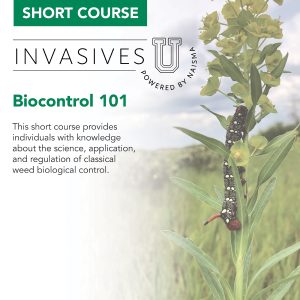Invasive species prevention requires advocacy at all levels of government. For National Invasive Species Awareness Week, we’re sharing success stories and advice from leaders across the nation.
Fayetteville, Arkansas, isn’t letting new invasive plants get a foothold easily.
Since 2016, landscape plans for large-scale developments have landed on the desk of John Scott, urban forester for the city. He reviews each species the developer intends to plant.
Callery pear?
English ivy?
Not allowed, along with 16 other plants known to be invasive in his area.
When the development is complete, John checks it a second time in person. The property doesn’t get its certificate of occupancy until it complies with the city’s invasive plant ordinance.
This policy involved invasive species managers working with partners who care about the city’s unique biodiversity. Their simple approach took less than a year to go from idea to reality.
What makes Fayetteville special?
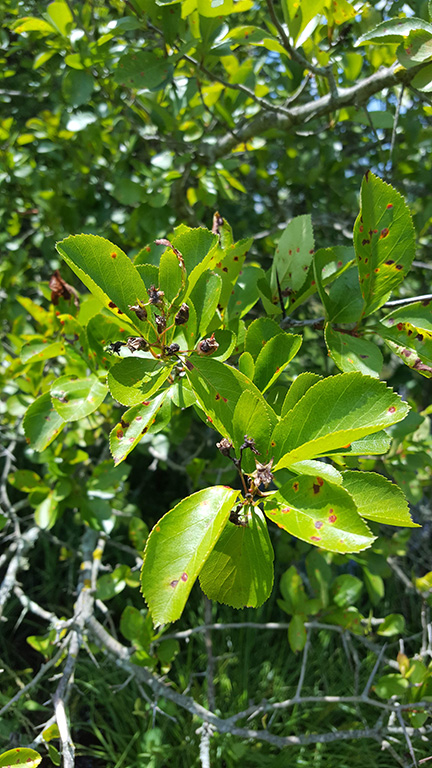
Fayetteville sits where the Boston Mountains and Springfield Plateau meet, so to drive in and around the city is to skirt along Ozarkian bluff lines and rivers, plunge down steep hills, and cruise over flatter terrain that historically supported tallgrass prairies and oak savanna. As a destination for mountain bikers, hikers and paddlers, many people living in Northwest Arkansas—and Fayetteville in particular—embrace the region’s natural environment as a valuable resource. Its citizens have recently worked to ban Styrofoam and launch the nation’s first bounty for the invasive Callery pear tree (and this year, bush honeysuckle).
Within Fayetteville’s hilly urban woodland and forested areas, you can still find native species such as the Missouri ground-cherry (Physalis missouriensis) growing at the bases of bluffs on Kessler Mountain. The rare Allegheny monkey-flower (Mimulus ringens) and Palmer’s hawthorn (Crataegus palmeri), though struggling, still hang on in some pockets of the city.
But as populations have rapidly expanded in this area, so too have pressures on Fayetteville to keep invasive species in check.
“Areas where there’s not a lot of management suffer from invasions of bush honeysuckle and Chinese privet growing in the understory,” says Peter Nierengarten, Environmental Director for the city’s Sustainability and Resilience Department.
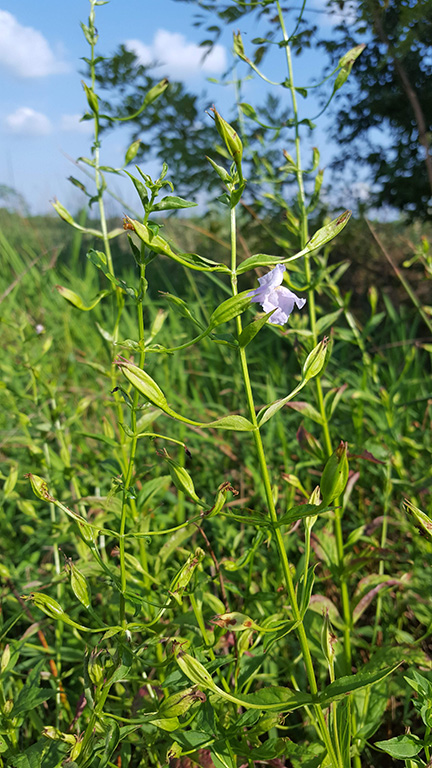
“I struggle to think of areas where [honeysuckle and privet] have not invaded and displaced native species,” says Jennifer Ogle, president of the Fayetteville Natural Heritage Association and Herbarium Collections Manager at the University of Arkansas. “I suppose these woody species aren’t quite as bad in the prairies, but the vast majority of those areas are now so heavily managed for hay that almost everything except tall fescue and bermuda has been suppressed or displaced. Then there’s perfumed cherry, Callery pear, tree-of-heaven, Oriental bittersweet, and a few other woody invasives that have become very common in this area as well.”
Kristina Jones, Volunteer & Community Programs Coordinator for the City of Fayetteville, agrees with this assessment of invasive species. She encounters them all as she leads volunteer groups in environmental restoration. With a small staff on the Parks & Recreation Department, volunteers perform much of the invasive species removal work in Fayetteville.
Working with stakeholders including Ogle and Jones, Nierengarten guided a citizen effort to pass the invasive plant ordinance in 2015.
The timing for advocacy was right. “Community support related to invasive species was rising,” Nierengarten says. “There was growing awareness of Callery pear, which had begun to hybridize, seed itself and populate with colonies in pasture land. People saw it as less popular for planting and more of a nuisance tree.”
Nierengarten assembled members of groups including the Fayetteville Natural Heritage Association, Master Naturalists, botanical groups associated with the University of Arkansas, and others concerned about the spread of invasive plants.
Starting small with a volunteer board
Although an invasive plant proposal would require City Council approval to become an official ordinance, the group started smaller. They first brought their concerns to the city’s Urban Forest Advisory Board. (To join this board, members apply for the volunteer position and interview for the post. The group reports to city council. Membership on boards or committees is not necessary to pass a new rule. However, joining them could help long-term invasive species management advocacy in your own city.)
The UFAB worked with the citizen group on a drafting a Resolution of Intent. The document asked City Council, “Would you approve staff time to study and develop a new policy and/or ordinance regarding invasive plants?”
The Council said yes. Starting in May 2015, city staff worked with a team of 13 stakeholders (including nursery owners/managers, landscape architects, academic experts, landscape installers, hobby gardeners, botanists, naturalists, conservationists, City Park Managers and local citizens) who “met to evaluate the economic and environmental harm caused by invasive plants,” according to a city web page.
For example, Jones says, she educates people on how invasive plants can influence erosion — and cost taxpayers more in services. “When you have monoculture, you have fewer plants, barer soil, and that soil ends up in the watershed,” she says. “Our Beaver Water District spends more time removing soil from the water than they do removing litter.”
The group also reviewed what problematic species were still being planted, Nierengarten says. They decided Fayetteville needed an invasive plant policy. Then they found examples from peer communities with invasive plant species policies.
Within months, the group drafted an ordinance, and the City Council adopted it in November 2015. The ordinance established a list of 18 invasive plants restricted from large new developments. It includes an educational brochure suggesting native alternatives.
“Developers got on board really quickly,” Scott says. “They’re quick to remove plants if it doesn’t pass review.”
Was it worth the effort?

The ordinance applies only to new developments. However, its presence in the city has raised overall awareness of invasive plant issues; some private entities have cleaned their biological pollution on their own. For instance, Scott says, a hospital medical complex recently removed all Bradford pears from their campus.
Jones considers the rule a morale booster as she educates the public on nonnative invasive plants. “Volunteers know when they invest that sweat equity their efforts are supported, and they may have a more lasting impact than if there were no regulations on the books,” she says.
“I do think it’s working, largely because of the educational packet the city developed to help people find native alternatives,” Ogle says. She collaborated with a designer on the packet information. “I hear from people frequently in other areas of the state who want to develop similar ordinances for their cities because of ours.”
To those cities, Ogle advises: keep it simple.
“I feel the point is to get the word out to a wide audience about the dangers of invasives and the benefits of natives, to influence people to change their current design and landscaping practices, not to burden people with a long list of what they can’t plant,” Ogle says. “Also, if a city is going to prohibit certain species under certain circumstances like the City of Fayetteville did, I would encourage decision makers to research what is being widely sold and planted in their area and target those species, and not focus entirely on what has already become extremely invasive.”
“Also, be flexible,” Ogle says. “The species list could change over time, and that should be allowed for in the ordinance.”
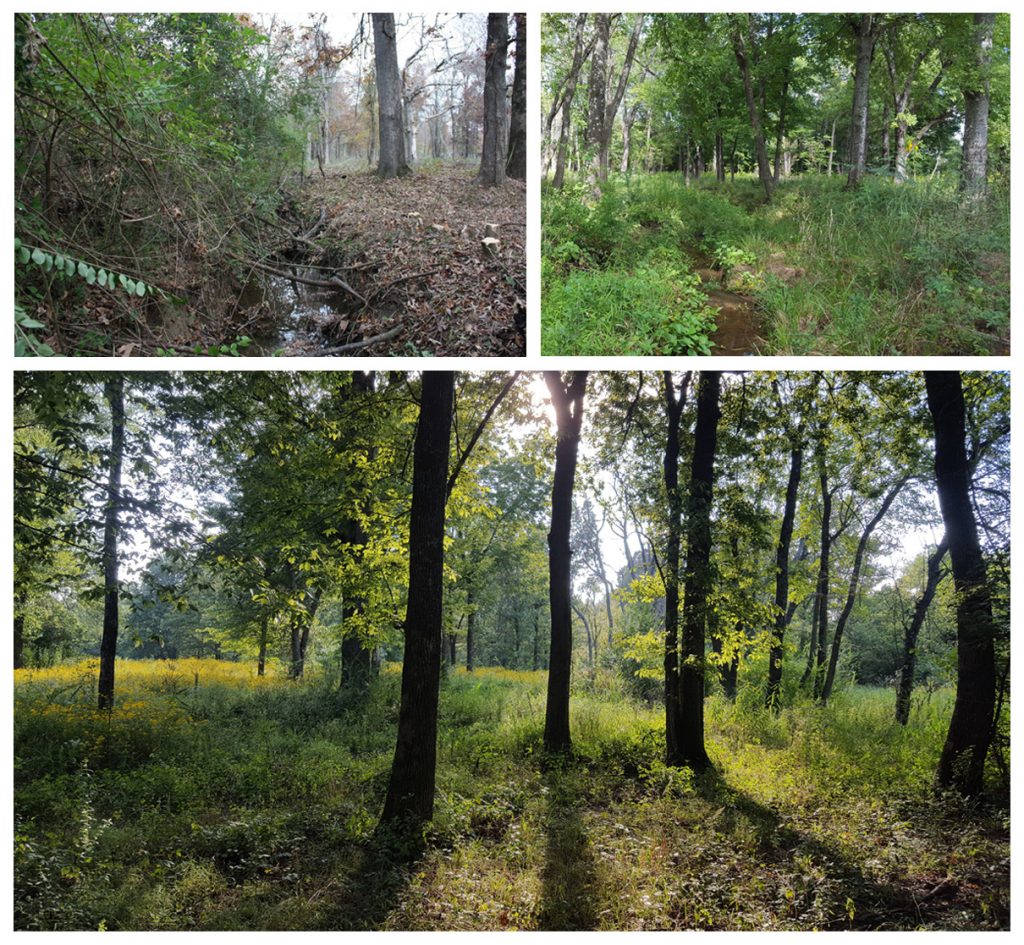
For more on engaging decision makers on invasive species issues, read, “Do You Have What You Need For an Invasive Species Engagement Plan?”

Tina Casagrand
Tina Casagrand is excited to bring her experience in environmental journalism and conservation leadership to the important work of invasive species management. When not editing the communications of NAISMA and PlayCleanGo, she publishes The New Territory magazine and works as contract coordinator of the Missouri Invasive Plant Task Force.


